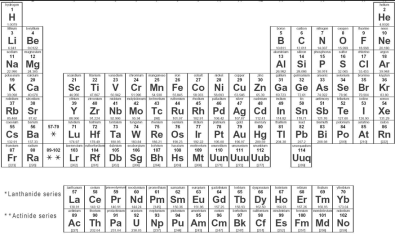Selling LOTS of Books and Why Bright Ideas Can Go BADLY

The Reliant Robin: Image via “Top Gear”
Writers must understand structure if they hope to be successful. Yes, it might take five years to finish the first novel, but if we land a three book deal, we don’t have 15 years to turn in our books. And the key to making money at this writing thing is we have to be able to write books…the more the better. If we can write GREAT books quickly? WINNING!
Understanding structure helps us become faster, cleaner, better writers.
Plotters tend to do better with structure, but even pantsers (those writers who write by the seat of their pants) NEED to understand structure or revisions will be HELL. Structure is one of those boring topics like finance or taxes. It isn’t nearly as glamorous as creating characters or reading about ways to unleash our creative energy.
Structure is probably one of the most overlooked topics, and yet it is the most critical. Why? Because structure is for the reader. The farther an author deviates from structure, the less likely the story will connect to a reader.
As an editor, I can tell in five minutes if an author understands narrative structure. Seriously.
Oh and I can hear the moaning and great gnashing of teeth. Trust me, I hear ya.
Structure can be tough to wrap your mind around and, to be blunt, most new writers don’t understand it. They rely on wordsmithery and hope they can bluff past people like me with their glorious prose. Yeah, no. Prose isn’t plot. We have to understand plot. That’s why I make learning this stuff simple, easy and best of all FUN.
And for those who’ve heard my clever stories before, just be polite and laugh and for the sake of the new kids.
Does Your Plot Have “Chemistry”?
Learning narrative structure ranks right up there with…memorizing the Periodic Table. Remember those days? Ah, high school chemistry. The funny thing about chemistry is that if you didn’t grasp the Periodic Table, then you simply would never do well in chemistry. Everything beyond Chapter One hinged on this fundamental step—understanding the Periodic Table.
Location, location, location.

Here’s the Periodi–ZZZZZZZZZZZZ
See, the elements were a lot like the groups at high school. They all had their own parts of the “lunch room.” Metals on one part of the table, then the non-metals. Metals liked to date non-metals. They called themselves “The Ionics” thinking it sounded badass. Metals never dated other metals, but non-metals did date other non-metals. They were called “The Covalents” and liked to wear hemp and put flowers in their hair.
And then you had the neutral gases—The “Noble” Gases. The nerds of the Periodic Table. No one hung out with them. Ever. Okay, other nerds, but that was it.
Period.
All silliness aside, if you didn’t understand what element would likely hang out where and in what company, the rest of chemistry might as well have been Sanskrit….like it was for me the first three times I failed it.
Novel structure can be very similar. Today we’re going to cover some basics. We must understand basics before we ever worry about things like Aristotelian structure, turning points, rising action, and darkest moments, subtext, parallel timelines and where the heck we can buy a Flux Capacitor to go back in time and slap ourselves for spending five years on a seriously dumb plot idea (that seemed GENIUS at the time).
Often, structure is the stuff most new writers don’t understand, but I am going to save you a ton of rewrite and disappointment. Prose is not a novel. Just because we can write lovely vignettes doesn’t mean we have the necessary skills to write an 65-120,000 word novel.
When we lack a basic understanding of structure we have set ourselves up for a lot of wasted writing.
Ah, but understand the basics? And the potential variations are mind-boggling even if they are bound by rules, just like chemistry :D . Carbon chains can be charcoal, but they also can be frogs, ferrets and fluffernutter.

And BABY SPAWN!
Now before you guys get the vapors and think I am boxing you into some rigid format that will ruin your creativity, that’s a lie. Boundaries, even loose ones, actually intensify creativity.
Don’t believe me? Watch any show about maximum security prisons. Those inmates are some of the most creative folks on the PLANET. Who knew a spoon could be so useful?
Anyway…
Plot is about elements, those things that go into the mix of making a good story even better.
Structure is about timing—where in the mix those elements go.
When you read a novel that isn’t quite grabbing you, the reason is probably structure. Even though it may have good characters, snappy dialogue, and intriguing settings, the story isn’t unfolding in the optimum fashion. ~James Scott Bell from Plot and Structure.
Structure has to do with the foundation and the building blocks, the carbon chains that are internal and never seen, but will hold and define what eventually will manifest on the outside—banana or butterfly? Paranormal Romance? Or WTH? Structure holds stories together and helps them make sense and flow in such a way so as to maximize the emotional impact by the end of the tale.
If an author understands the rules, then the possible combinations are limitless. Fail to understand the rules and we likely could end up with a novel that resembles that steamy pile of goo like from that scene in The Fly when Jeff Goldblum sends the baboon through the transporter but it doesn’t go so well for the baboon. The idea was sound, but the outcome a disaster…okay, I’ll stop. You get the idea.
Structure is important.
We are going to first put the novel under the electron microscope.
The Micro-Scale
The most fundamental basics of a novel are cause and effect. That is super basic. An entire novel can be broken down into cause-effect-cause-effect-cause-effect (Yes, even literary works). Cause and effect are like nucleus and electrons. They exist in relation to each other and need each other. All effects must have a cause and all causes eventually must have an effect (or a good explanation).
I know that in life random things happen and good people die for no reason. Yeah, well fiction ain’t life. If we wanted real LIFE, we wouldn’t read FICTION.
So if a character drops dead from a massive heart attack, that “seed” needed to be planted ahead of time. Villains don’t just have their heart explode because we need them to die so we can end our book.
Now, all these little causes and effects clump together to form the next two building blocks we will discuss—the scene & the sequel (per Jack Bickham’s Scene & Structure). Many times these will clump together to form your “chapters.”
Cause and effect are like the carbon and the hydrogen. They bind together to form carbon chains. Carbon chains are what make up all living organisms. Like Leggos put together differently, but always using the same fundamental ingredients.
Carbon chains make up flowers and lettuce and fireflies and all things living, just like scenes and sequels form together in different ways to make up mysteries and romances, and thrillers and all things literary.
Structure’s two main components, as I said earlier, are the scene and the sequel.
The scene is a fundamental building block of fiction. It is physical. Something tangible is happening. The scene has three parts (again per Jack Bickham’s Scene & Structure, which I recommend every writer buy and READ).
Statement of the goal
Introduction and development of conflict
Failure of the character to reach his goal, a tactical disaster
Goal –> Conflict –> Disaster
The sequel is the other fundamental building block and is the emotional thread. The sequel often begins at the end of a scene when the viewpoint character has to process the unanticipated but logical disaster that happened at the end of your scene.
Emotion–> Thought–> Decision–> Action
Link scenes and sequels together and flesh over a narrative structure and you will have a novel that readers will enjoy.
Oh but Kristen you are hedging me in to this formulaic writing and I want to be creative!
Understanding structure is not formulaic writing. It is writing that makes sense on a fundamental level. On some intuitive level all readers expect some variation of this structure. Deviate too far and risk losing the reader by either boring her or confusing her.
This is where “literary-artsy writers” often chime in and want to bring up examples of how “Thus-and-Such won a Pulitzer by writing an Epic-Fantasy-Self-Help told only by using combinations of haiku and emoticons.” Fine. Go for it. I’m here to teach how to write a commercial product, which is something consumers want to…consume. Code for “buy.” Just because we are creating something commercial doesn’t mean it is less-than or “not” art.
One word…Ferrari. Has four wheels, doors in logical places, the steering wheel isn’t in the trunk and people pay BIG BIG MONEY to own one.

Image via Flikr Creative Commons, courtesy of Kosala Bandara
Cars come in all sizes shapes and variations. The engine can be in the front, in the back, powered by sunlight. Cars can be one color or all colors or have a COOL WIZARD airbrushed on the sides. But, there are fundamentals that the Scion and the Lambourghini should share or it can go badly—”rules.” For a good laugh: Ten Bad Ideas That Seemed Good at the Time .
When we start getting clever for the sake of being clever? Our story can do this:
***WARNING: Do not drink liquids while watching.
Granted, to a small group of collectors and aficionados, these products are valuable. Heck, even that lampshade hat made of prime rib jerky Lady Gaga wears to award ceremonies cost a pretty penny, but most of us will stick to wearing a regular ball cap ;).
I look forward to helping you guys become stronger at your craft. What are some of your biggest problems, hurdles or misunderstandings about plot? Do any of you have tricks for plotting you would like to share?
I do want to hear from you guys!
To prove it and show my love, for the month of JUNE, everyone who leaves a comment I will put your name in a hat. If you comment and link back to my blog on your blog, you get your name in the hat twice. What do you win? The unvarnished truth from yours truly. I will pick a winner once a month and it will be a critique of the first 20 pages of your novel, or your query letter, or your synopsis (5 pages or less).
ANNOUNCEMENTS:
If you feel you might have the vapors after reading all of this, no worries, I offer classes to HELP.
TOMORROW is my First Five Pages Class and use WANA15 for $15 off. If you can’t make the time, no worries, all classes are RECORDED and come with notes for reference. Upgrade to the GOLD level and I will look at your first five pages and give DETAILED analysis. This is NOT simple line-edit. This is a detailed, how to start your story in the right place and in a way that HOOKS analysis.
Also my Antagonist Class is coming up on June 27th and it will help you guys become wicked fast plotters (of GOOD stories). Again, use WANA15 for $15 off. The GOLD level is personal time with me either helping you plot a new book or possibly repairing one that isn’t working. Never met a book I couldn’t help fix. This will save a TON of time in revision and editors are NOT cheap.
For more help with your social media/author platform/author brand, please check out Rise of the Machines—Human Authors in a Digital World.





